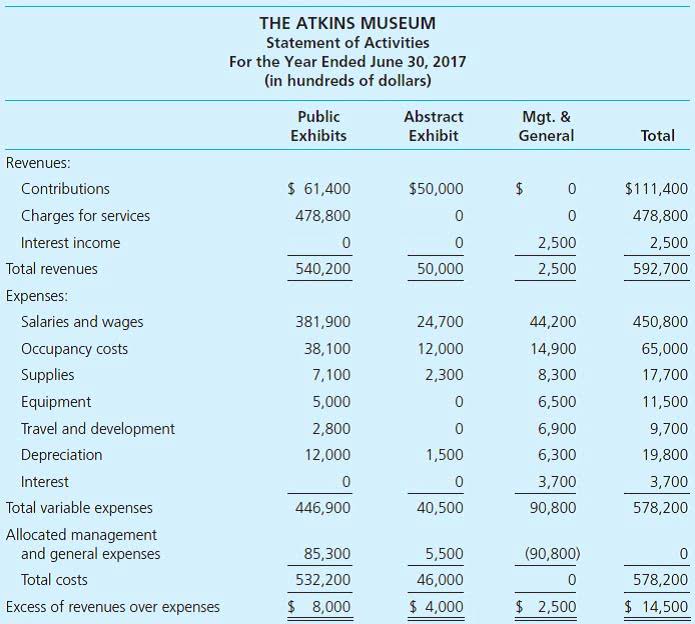
According to FASB statement no. 52, a cumulative translation adjustment (CTA) is needed to help investors understand operational profits and losses and differentiate them from foreign currency translation. The functional currency of contribution margin a business’s parent country means the currency of the primary economy where the business generates and spends the majority of its cash reserves. If exchange rates are not properly recorded or adjusted, it can lead to unrealized losses or gains, resulting in inaccurate financial statements. Cash flow statements are similarly affected, as converting foreign cash flows into the parent company’s currency can create discrepancies between reported net income and actual cash flow from operations. This is particularly relevant for companies with significant international operations, where currency fluctuations can obscure the underlying cash-generating ability of the business. Stakeholders must closely examine cash flow reconciliations to better understand operational performance.
- According to the FASB ASC Topic 830, Foreign Currency Matters, all income transactions must be translated at the rate that existed when the transaction occurred.
- The two primary methods used are the current rate method and the temporal method, each with its own set of rules and implications for financial reporting.
- However, it can also obscure the impact of current exchange rate movements on the subsidiary’s financial health.
- Transparency is essential for stakeholders evaluating earnings sustainability and future cash flow impacts.
- This $100,000 difference is recorded in the foreign currency translation reserve.
- GAAP also mandates detailed disclosures about translation adjustments and their equity impact, enhancing transparency.
- This ensures that the financial records reflect the true economic value of the transaction at the time it occurs.
Find the talent you need to grow your business

Conversely, an unfavorable rate at settlement will result in a realized loss, reducing taxable income. Understanding the nuances of foreign currency transactions can significantly impact a company’s financial health and strategic decision-making. Companies must adhere to various accounting standards, such as IFRS or GAAP, which have specific guidelines for foreign currency translation. Ensuring compliance with these standards while managing the inherent risks of currency fluctuations requires meticulous attention to detail and robust internal controls. Another consideration is the selection of the appropriate exchange rate for translation purposes. Different rates, such as the spot rate, forward rate, or historical rate, may be used depending on the nature of the transaction and the accounting policies in place.
Monetary Nonmonetary
- However, Company B’s functional currency is US dollars, and it records the accounts receivable transaction in USD.
- The difference between the beginning $1.1 million and ending $1.2 million translated net assets is $100,000.
- Another example is handling foreign currency transactions within a single reporting period.
- On the balance sheet, the cumulative foreign currency translation adjustment appears under the equity section.
It enables consolidated and consistent financial reporting across global business transactions. The functional currency choice significantly impacts financial reporting and tax compliance. Incorrect identification can lead to foreign currency translation methods discrepancies in financial statements, creating issues with auditors and tax authorities.

Cash

Businesses must consider its complexity and must adhere to the accounting rules for foreign currency translation. Foreign currency Remote Bookkeeping translation is an accounting method that converts the results of a foreign subsidiary into its parent company’s functional currency, adjusting for exchange rate differences. It is an essential practice for businesses operating in many countries, transacting in various currencies, or managing subsidiaries globally. The foreign currency translation accounting is the process of converting the foreign currency earning of the subsidiaries in foreign countries to the domestic currency where the parent company is located. In summary, proper accounting and reporting of foreign currency translation adjustments allows financial statement users to accurately assess a company’s financial health and business performance across borders.
What does translate currency mean?
The process of foreign currency translation results in accounting FX gains and losses. Finally, with the current rate method, all balance sheet and income statement items are translated at the current exchange rate. No matter what foreign currency translation is used, the resulting FX gains and losses are paper only, and rarely affect cash flows.
The three primary methods—Current Rate, Temporal, and Monetary Nonmonetary—each have unique methodologies and implications for financial reporting. The foreign currency translation adjustment or the cumulative translation adjustment (CTA) compiles all the fluctuations caused by varying exchange rate. Foreign currency translation is the accounting method in which an international business translates the results of its foreign subsidiaries into domestic currency terms so that they can be recorded in the books of account. Monetary account items, such as cash and accounts receivable, are translated at the current exchange rate, whereas non-monetary accounts are translated at a historic rate. Each method tackles the translation of various financial items like assets, liabilities, and more, differently. The difference between the beginning $1.1 million and ending $1.2 million translated net assets is $100,000.

Properly executing foreign currency translation is vital for accurate consolidated financial reporting. It eliminates the distortions from operating in different currencies across an organization. Compliance with these standards requires meticulous record-keeping and robust internal controls. Accounting systems must track exchange rates and apply appropriate translation methods. Auditors play a critical role in verifying compliance, as non-compliance can lead to restatements, regulatory scrutiny, and penalties. Securities and Exchange Commission (SEC) has fined companies for misreporting FX-related adjustments, underscoring the need for rigorous oversight.
A key implication of the Current Rate Method is the creation of a translation adjustment, recorded in the equity section of the consolidated balance sheet as part of other comprehensive income. This adjustment arises because the balance sheet is translated at the current rate while equity is translated at historical rates, leading to differences that must be reconciled. These adjustments affect the overall equity value reported by the parent company.
- These adjustments affect the overall equity value reported by the parent company.
- On the other hand, the temporal method is used when a foreign subsidiary’s operations are closely integrated with the parent company.
- It can result in translation gains or losses that are recognized in the income statement, affecting the overall financial performance.
- This can get quite complicated, so always be sure to consult your applicable accounting standards.
- Foreign currency translation involves converting financial statements of foreign subsidiaries into the parent company’s reporting currency.
- Businesses with international operations must translate their transactions like the acquisition of assets or the purchase of services into their functional currency.
- Effective foreign currency translation enhances the reliability and comparability of financial statements.
HighRadius offers a cloud-based Record to Report Software that helps accounting professionals streamline and automate the financial close process for businesses. We have helped accounting teams from around the globe with month-end closing, reconciliations, journal entry management, intercompany accounting, and financial reporting. The business will report this adjustment in the equity section of the balance sheet under “Accumulated Other Comprehensive Income” as a reduction. This reflects the impact of exchange rate changes on the value of foreign assets and does not affect net income but will change the equity position of the business. It is important for businesses to determine the exchange rates based on transaction date.


Leave A Comment